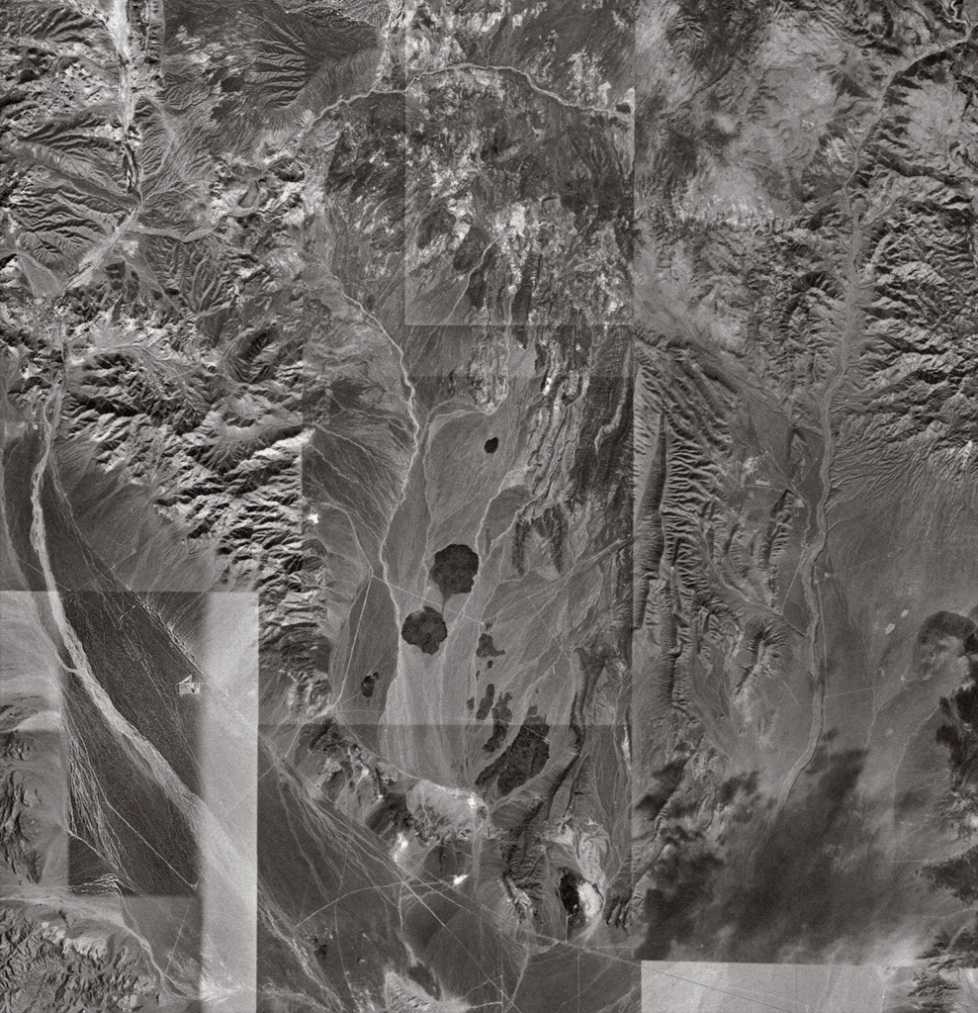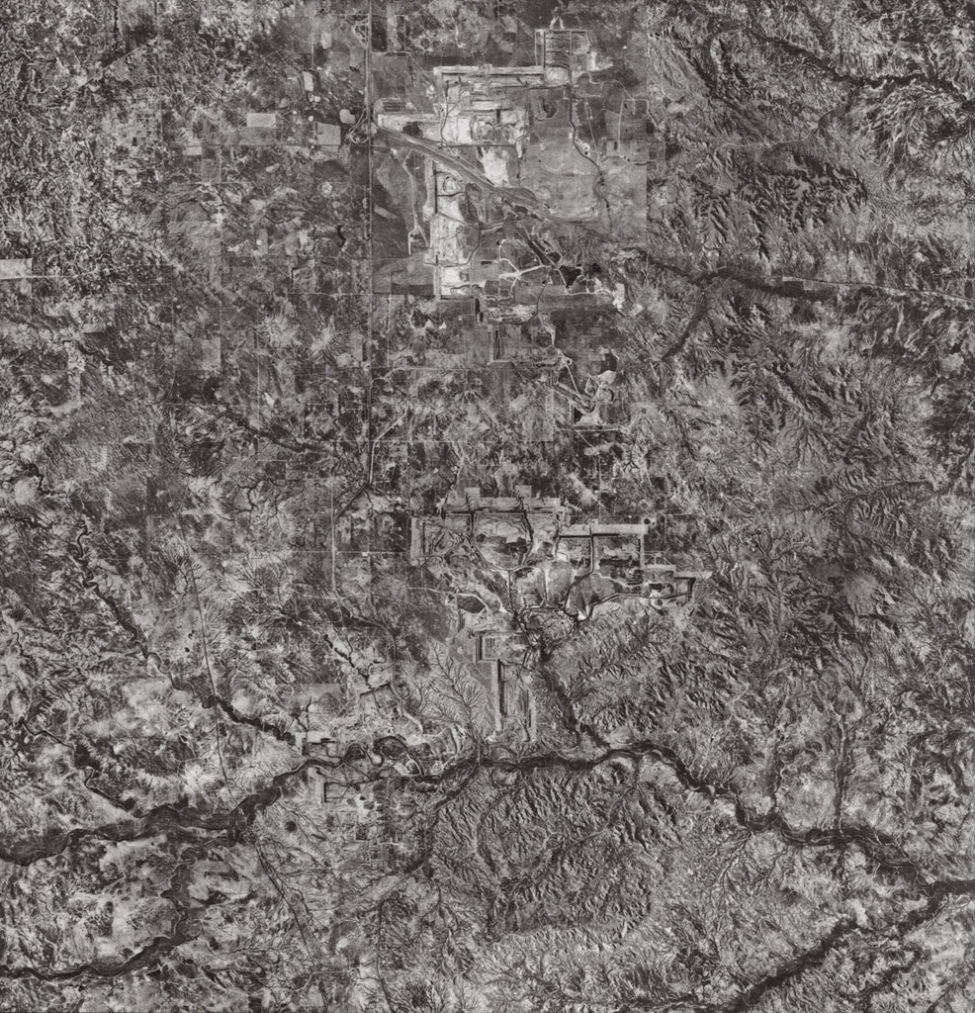UPDATE 12/12/12: You can read more about platinum/palladium printing at my blog devoted to the subject at www.platinumprinting.wordpress.com/
—
When I started this blog I was reluctant to make too many posts on technical issues. However, for the past few weeks I have been testing a few different methods for making better platinum prints, as well as tests with the Jon Cone piezography inks for digital negatives—for both silver and platinum printing. I am planning on posting an extensive review of the Jon Cone "digital film" inkset in the near future.
—
If there were ever a lifelong quest of the platinum printer it would be in one in search of blacker-blacks. That is what led me first to double coating, experimenting with printing multiple separation negatives, and then waxing my platinum/palladium prints. So when I read on Swings and Tilts, Bostic and Sullivan’s blog, about pre-coating the paper with fumed silica, I was compelled to try that as well.
Most of my testing the last few years has been less than scientific, and I generally trusted my eye, and comparisons of new test prints of certain images that have proven to yield exquisite print qualities across a variety of processes. However, for the fumed silica I wanted to know exactly how it affected contrast and exposure for my standard calibrated platinum/palladium workflow.*
The initial write-up on the Swings and Tilts says to use a foam paint roller to apply either the liquid or powdered form of fumed silica evenly to the paper, but the webstore only has a liquid in a 500ml bottle. I didn’t have a foam roller on hand to coat the liquid fumed silica so I used a 3-inch foam brush and a small tray with a few drops of solution. I dipped the brush in the tray to pick up the solution and quickly coated the entire sheet of paper. I try to keep the brushing to a minimum as to not damage the paper’s surface while still keeping as even coat as possible. Once the paper is coated it will start to curl, but will lay flat again after it dries for 5-10 minutes.
To actually test the effects of the Fumed Silica on print quality, I used a standard Stouffer calibrated 21-step tablet exposed through a sheet of Pictorico Premium OHP (I printed through the OHP because I was also testing against my standard printing time and testing the density range needed for inkjet negatives).
The results were somewhat surprising: the D-max increased as expected, but the separation in both the shadow and highlight values both increased. The paper seemed to be slightly faster as well, which contradicts the updated instructions on the Swings and Tilts blog.
The first two papers to test were Revere Platinum and Arches Platine, which was my preferred paper until about two years ago. The last two batches I received have been terrible—a rougher surface, lower D-max and problems with white specks all over the print. (I later learned in a conversation with Dana at Bostic and Sullivan that the Arches mill was bought up by another company and they fired the old guy who used to select the cotton and oversee production of Platine). The problem with the white specks is from small hairs sticking up off the paper’s surface. Dana suggested I try Tween 20 on the Arches, which solved some of the problems, but that Revere Platinum was a better paper all around. I am sitting with more than 25 full sheets of Platine and hoped the fumed silica would let me salvage the paper. In short, it didn’t.
The Platine seems to be worse with fumed silica than without. Without fumed silica the D-max is still low and the print has a muddy appearance in the darker tones. With the fumed silica the D-max did increase, but brushing it on seemed to have dislodged the paper fibers and spread them all over the coated area, resulting in very spotty prints. It is possible that rolling the fumed silica on dry will solve this problem, but it is still too much trouble to be a usable paper for me.

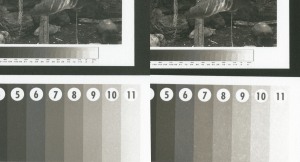
The Revere Platinum without the fumed silica does show an uneven coating and a specked surface as some people have reported on APUG and DPUG. The fumed silica seems to have evened out all the surface and spottiness problems. It needs more testing with larger final prints with large areas of smooth tone to be certain, but this preliminary test looks promising. Like the Arches Platine, the D-max increased and it seems to have increased the exposure scale as well. I checked the step wedge on a densitometer and graphed the curve in excel. I was surprised at how the curve was smoothed out with the fumed silica.
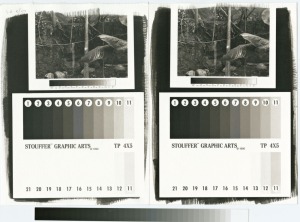
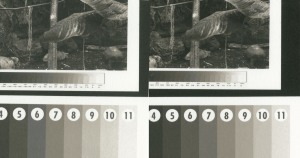
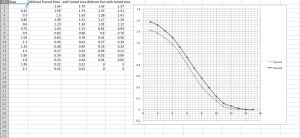
*My standard coating mix is slightly different than the generally agreed upon ratio of sensitizer, metal salts, and restrainer. My system is based on four drops each of sensitizer and palladium to one drop of Tween 20 and one drop of NA2 at 2.5%–10%, depending on the image. My first coat is diluted with distilled water equal to the number of drops of sensitizer/palladium, keeping the Tween 20 and NA2 constant.
For a 4x5-inch print I use for a first coat a mixture of 2 drops each of Ferric Oxalate, and Palladium, 4 drops H2O, and 1 drop each of NA2 @ 2.5% and tween 20.
My second coat is 4 drops each of FO and PD, 1 drop of NA2 at the needed dilution, and 1 drop of Tween 20. When using the Jack Richeson “magic brush” you can get away with using fewer total drops, and while this is really too much solution for a 4x5-inch print, it scales up to an 8x10 print very well by only doubling the number of drops of each solution.
 Why not just post more about the technical aspects here on my current blog? From the start, I always planned on keeping my personal blog devoted to updates on my work, aesthetic issues, and my thoughts on photography in general. Over the last few years I have become passionaly involved with platinum/palladium printing and want to share what I have learned to the growing number of people beginning to work with the process. With a separate blog, those who only want to read about that can do so without the updates on my personal work, which is becoming more diverse as I incorporate digital appropriation, mixed media, and video installation with my more traditional forms of photographing and print making.
Why not just post more about the technical aspects here on my current blog? From the start, I always planned on keeping my personal blog devoted to updates on my work, aesthetic issues, and my thoughts on photography in general. Over the last few years I have become passionaly involved with platinum/palladium printing and want to share what I have learned to the growing number of people beginning to work with the process. With a separate blog, those who only want to read about that can do so without the updates on my personal work, which is becoming more diverse as I incorporate digital appropriation, mixed media, and video installation with my more traditional forms of photographing and print making.